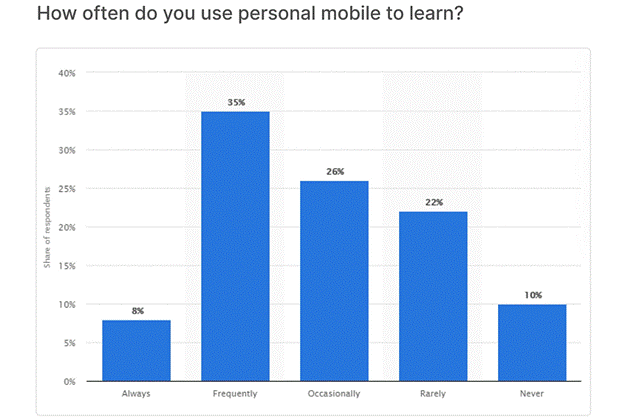Nigeria’s workforce stands at a pivotal juncture. Organisations face mounting pressure to cultivate agile, skilled workforces capable of navigating volatile markets and evolving regulatory landscapes. Traditional training paradigms, often characterised by lengthy workshops and rigid schedules, struggle to meet the demands of a dynamic workforce. Microlearning emerges as a transformative approach, delivering bite-sized, targeted content that fosters continuous development without disrupting productivity.
Employee development has never been more critical. Organisations that invest in continuous learning not only mitigate talent attrition estimated at 20-30% annually in competitive industries but also cultivate resilience against economic shocks, including inflation rates surpassing 20% and currency fluctuations. Yet, conventional training methods falter in this environment. Prolonged sessions, logistical hurdles, and cultural norms favouring hierarchical learning often result in disengagement and suboptimal knowledge retention.
Enter microlearning: a paradigm shift towards delivering educational content in concise, digestible modules which is typically 5-10 minutes via mobile devices or digital platforms. This approach aligns seamlessly with most emerging markets’ hyper-connected workforce, where mobile penetration and smartphone adoption are high among urban professionals. Microlearning represents an opportunity to empower businesses in bridging performance gaps and fostering a culture of perpetual upskilling that propels both individual careers and organisational success.
The Nigerian Workforce Landscape: Challenges in Employee Development
The formal economy contends with a scarcity of specialised skills. Reports indicate that 74% of employers identify digital literacy as a primary gap, exacerbated by inadequate infrastructure and limited access to quality training. Several constraints plague traditional employee development initiatives, one of which is scarcity. Resource scarcity manifests in underfunded programmes, where budgets for training constitute less than 1% of payroll in many small and medium enterprises.
Moreover, cultural attitudes towards learning often viewing it as a one-off event rather than an ongoing pursuit compound issues of low engagement. Studies reveal that only 13% of Nigerian workers participate in formal training annually, contributing to productivity losses estimated at 2-3% of GDP. The ripple effects are evident: high turnover in knowledge-intensive sectors like banking and telecommunications, where employees seek growth opportunities elsewhere, and stalled innovation in manufacturing due to outdated competencies.
These challenges are particularly acute for multinational firms and SMEs alike, where the need for agile, adaptable talent clashes with rigid development models. In this context, microlearning offers a practical solution, leveraging mobile technology to democratise access and instil a habit of lifelong learning.
Understanding Microlearning: A Modern Approach to Skill Building
Microlearning reimagines employee development by distilling complex topics into focused, self-contained units optimised for quick consumption and immediate application. Unlike monolithic courses spanning hours or days, microlearning modules encompassing short videos, interactive quizzes, infographics, or podcasts target singular learning objectives, such as mastering a software shortcut or refining negotiation techniques.

Source: Agente
At its core, microlearning capitalises on cognitive science principles, including the spacing effect, which posits that information absorbed in brief intervals yields superior retention up to 80% compared to 20% from traditional methods. This modality thrives on accessibility: content is delivered via mobile apps or learning management systems (LMS), enabling learners to engage during commutes in traffic or brief downtimes in offices.
This flexibility accommodates the hybrid realities of remote work in urban centres and on-site demands in rural enterprises, transforming passive recipients into proactive learners. For many organisations around the globe, microlearning has evolved from a tactical tool into a strategic lever for embedding development into daily workflows, ensuring skills evolve in tandem with market imperatives.
Benefits of Microlearning for Continuous Employee Development
The value of microlearning extends far beyond convenience, yielding measurable gains in engagement, efficacy, and cost-effectiveness.
- Enhances knowledge retention and application:
Microlearning aligns with the “just-in-time” learning principle, providing employees with targeted information exactly when they need it. This approach combats the natural forgetting curve that typically causes most new knowledge to fade within a day. Research shows that concise, bite-sized learning boosts recall by 17–20%, enabling employees to immediately apply new skills whether it’s a sales executive refining a client pitch or a technician troubleshooting equipment through quick, visual tutorials.

Source: Helpjuice
- Drives stronger learner engagement:
Today’s workforce thrives on brevity, interactivity, and flexibility. Short, engaging modules mirror the fast-paced digital experiences employees are accustomed to, keeping attention levels high and reducing the disengagement that often undermines longer training sessions. This approach promotes intrinsic motivation, as learners can access content at their own pace and see immediate relevance to their roles.
- Delivers measurable cost and time efficiencies:
Developing and delivering microlearning content typically costs up to 50% less than traditional training programmes. It eliminates logistical expenses such as venue hire, facilitator fees, and extended downtime from daily work. Moreover, cloud-based delivery ensures easy scalability allowing a single module to reach a global or distributed workforce with minimal additional cost.
- Enables data-driven performance improvement:
Modern microlearning platforms incorporate analytics that track participation, completion rates, and learner progress. These insights enable continuous refinement of content and learning strategies, ensuring optimal impact and return on investment. For organisations operating under tight budgets or in fast-changing industries, this evidence-based adaptability is a significant advantage.
Implementing Microlearning in Nigerian Organisations
Transitioning to microlearning demands intentional design, attuned to every organisation’s unique ecosystem.
- Conduct a needs assessment: Start by identifying key skill gaps through surveys, performance reviews, and workforce analytics. Focus on competencies that align with organisational priorities, such as digital literacy, customer engagement, compliance, or leadership development. This ensures that learning initiatives directly support business objectives and workforce performance.
- Curate locally relevant and engaging content: Develop learning materials that blend real workplace scenarios, cultural nuances, and global best practices. Using relatable examples and storytelling enhances relevance and retention while maintaining the credibility and rigour of professional training.

Source: Brandon Hall Group
- Select suitable learning platforms: Choose platforms that support microlearning delivery in accessible and flexible formats, such as mobile-first Learning Management Systems (LMS). Ensure these platforms are user-friendly, data-efficient, and capable of tracking learner progress for effective monitoring and reporting.
- Integrate microlearning into workflows: Embed learning modules into daily work routines such as onboarding for new hires, sales enablement programmes, or performance improvement plans. Use communication tools like chatbots or email nudges to deliver reminders and bite-sized lessons that fit naturally into employees’ schedules.
- Address common implementation challenges: Anticipate barriers such as limited learner engagement or resistance to new systems. Overcome these by securing leadership endorsement, showcasing early success stories, and maintaining open feedback loops that allow employees to voice challenges and share improvement ideas.
- Start with pilot programmes: Begin with a focused pilot in a department with measurable outcomes such as customer service, sales, or operations to test the approach and refine the content. Use insights from the pilot to scale up across the organisation with greater precision and effectiveness.
- Track and measure impact: Establish metrics like course completion rates, knowledge retention, skill improvement, and productivity gains. Use data-driven insights to refine training strategies, demonstrate ROI, and continuously enhance the learning experience.
- Sustain and embed adoption: Create a culture of learning by recognising and celebrating employees who actively engage in microlearning. Share their achievements through internal communication channels to inspire participation and reinforce continuous learning as a valued organisational norm.
- Outcome: With deliberate planning and integration, microlearning empowers organisations to build agile, future-ready workforces. It promotes engagement, supports skill growth, and fosters a learning culture that drives long-term business success.
Conclusion
Microlearning is more than an innovation in learning design it is a strategic imperative for the modern enterprise. In an era defined by rapid change, distributed teams, and shrinking attention spans, organisations that democratise development through bite-sized, on-demand learning position themselves at the forefront of agility and performance. By transforming learning into an ongoing, accessible experience rather than a periodic intervention, microlearning nurtures curiosity, accelerates skill mastery, and embeds adaptability into the organisational DNA.
The evidence is unmistakable: employees learn faster, retain more, and apply knowledge with greater confidence, while businesses gain measurable efficiency and competitive advantage. Ultimately, microlearning signals a shift from training to transformation redefining how people grow, how organisations evolve, and how the future of work will be continuously shaped by learning that is personal, purposeful, and profoundly human.
Next Step:
Proten International invites you to harness this momentum. Contact our experts today at info@protenintl.com or visit protenintl.com to schedule a consultation on tailoring microlearning and other learning and development solutions for your team.

